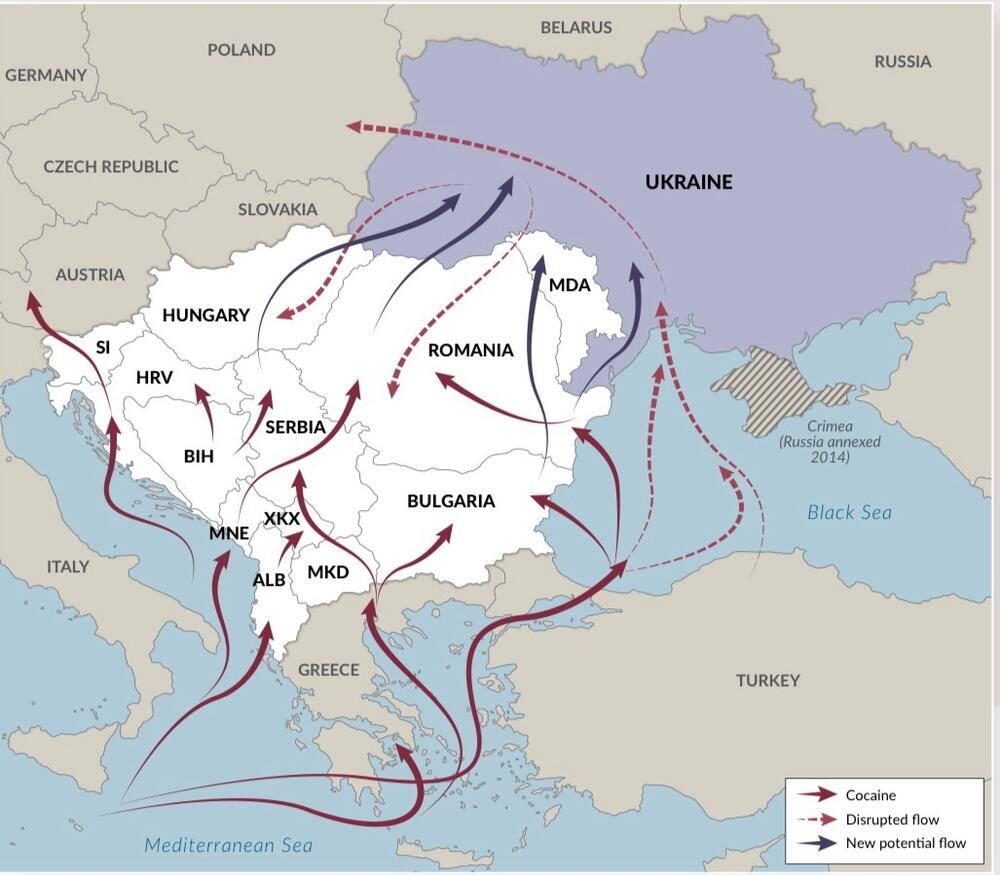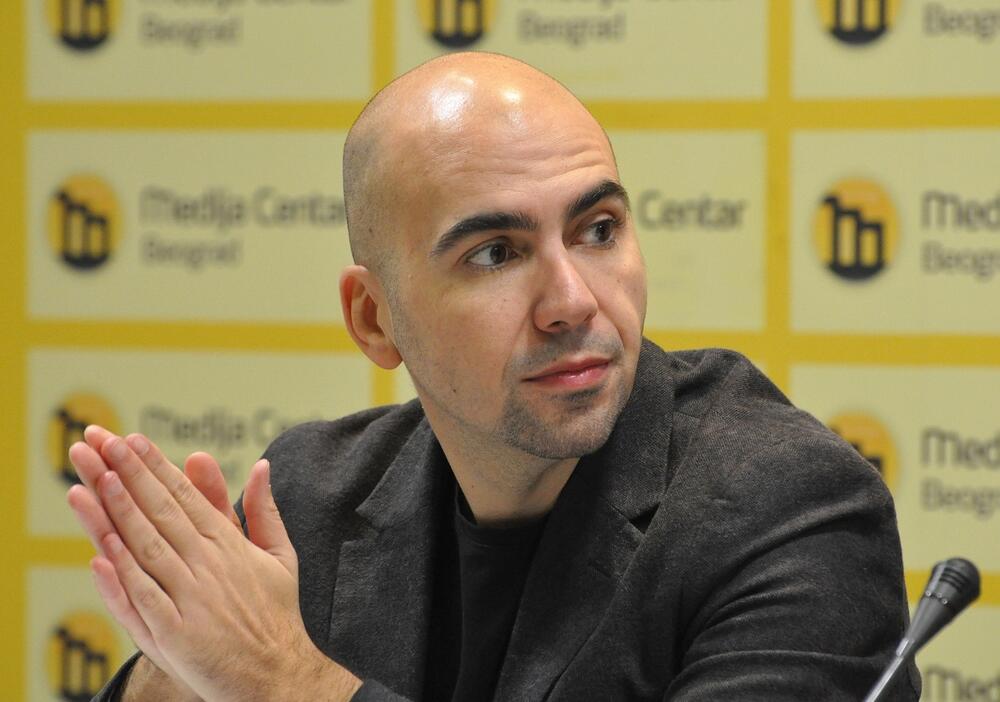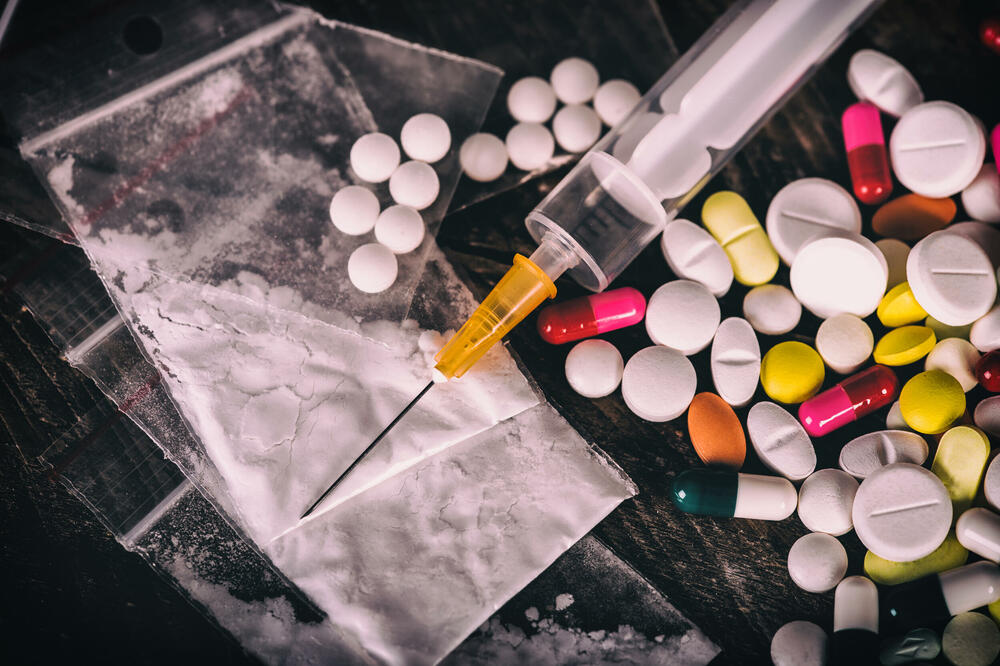Bloody conflicts between Montenegrin clans did not reduce their role in the international cocaine trade. There have been no drastic changes in price since the conflict began in 2015, except during the coronavirus pandemic. It is highly likely that the clans keep their cocaine business going. Although the conflict between the clans has generally weakened these criminal groups, some key members are still at large and have shown resilience thanks to their financial resources and ability to provide political protection, he told "Vijesti" Sasa Djordjevic, coordinator for Serbia and Montenegro of the Global Initiative against Transnational Organized Crime (GI-TOC).
This international organization, which consists of over 500 networked experts worldwide, has published research on the drug market in Albania, Bosnia and Herzegovina, Bulgaria, Kosovo, Montenegro, North Macedonia, Romania, Serbia and Ukraine.
Ruggero Scaturo, GI-TOC senior analyst, explains that they focused on these countries because they are key to the infamous Balkan route of illegal goods that have been moving from Eastern to Western Europe since the early 1980s.
"The region of Southeast Europe has been an important transit area for smuggling for decades and is a crime hotspot, which is why it is the focus of the Global Initiative's research. "Illegal drug trade is one of the criminal markets that we regularly monitor, and we periodically conduct research on the prices, use and methods of smuggling illegal drugs," explains Skaturo.
Greater flow of heroin
Explaining why Ukraine was on this list, he says that with the beginning of Russia's invasion of Ukraine in February 2022, the Global Initiative wanted to understand the impact of the war on various illegal markets in the wider region, including drug trafficking.
"Before the war, Ukrainian organized crime was only marginally relevant to the illegal economies in Southeast Europe, but the war is changing the climate and creating new opportunities for criminal organizations. In other words, although Ukraine does not geographically belong to the area we focus on in our work, we investigated the impact in order to understand the consequences and the impact of the war on Southeastern Europe, especially Romania", points out Ruggero Scaturo.

According to him, the comparative analysis showed that they are drug prices in the region are stable, if not increasing. The demand for cannabis in Ukraine can be met by traditional cannabis producers in Southeast Europe, such as Albania, North Macedonia and, more recently, Kosovo. Considering the increase in the number of seizures of cannabis that is exchanged for heroin along the Balkan route and the abundant supply of opiates from Afghanistan, a greater inflow of heroin is expected in Southeast Europe, which can affect the wholesale and retail price of cannabis and heroin, according to Skaturo.
As for cocaine, he adds, data from the last three years suggest that Southeast Europe is becoming a transit region, as evidenced by significant seizures in the Adriatic, Aegean and Black Seas, and these ports could become key entry points for cocaine supplies to Ukraine in the future.
Saša Đorđević points to the fact that there are minimal differences in the street prices of illegal drugs in the region. For example, one gram of cannabis is cheaper in Podgorica by about two euros than in Belgrade, which can be explained by lower transport costs, especially if the cannabis is purchased from Albania, but also because of the banknotes used in sales, the value of which must be round - five euros can be enough for one gram of cannabis in Podgorica, and 1.000 dinars in Belgrade, Đorđević explains.
"What is interesting about Montenegro is that during 2021, during the coronavirus pandemic, the price of cocaine in the country was significantly lower than in the rest of the region, around 40 euros per gram. One of the possible reasons for this could be the fact that Montenegro has access to the sea, which most often serves as the main route for cocaine smuggling, which contributed to lowering the price. Given the restrictions on movement during the pandemic, the market in Montenegro was flooded with cocaine, which probably led to a decrease in the price. However, as soon as movement eased and the borders were reopened, the price returned to the regional average. "Also, in Montenegro, it has only been observed that cocaine is injected directly into the veins using a needle," Đorđević warns.
The price of cocaine, by the way, according to Đorđe Skatur, varies not only between countries, but also in one particular country, depending on the economy of populated areas. The price of cocaine is rising in capitals and larger cities, where the majority of people who have higher incomes and are economically better off are concentrated.
"A relatively high demand for high-quality and therefore more expensive cocaine has also been observed in the region during the summer in coastal/tourist areas. However, in the same areas, there is usually a high demand for cocaine by-products, such as crack, which are consumed by people with lower incomes," adds Skaturo.

Speaking about synthetic drugs in Montenegro during the past decades, Skaturo points out that the use of this type of narcotic was relatively limited.
“In Albania, Kosovo and Montenegro, retail prices remained stable between 2020 and 2022, with prices ranging from €17 to €20 for an amphetamine tablet and €10-15 for an MDMA tablet. MDMA use appears to have increased recently, especially during the summer months. The situation in Bulgaria, Bosnia and Herzegovina, North Macedonia, Romania and Serbia is different. Romania and Bulgaria have always been hubs for the transit of synthetic drugs and production in 'home laboratories', as indicated by the periodic seizures of ephedrine and pseudoephedrine. This illegal trade in precursors is directed towards Western Europe from Afghanistan, using the same smuggling patterns as for heroin along the Balkan route," this analyst emphasizes.
Cannabis comes from Albania
According to Saša Đorđević, there are indications that the illegal market of synthetic drugs in Albania and Montenegro is growing, primarily to meet the needs of the local market during the tourist season when consumption is usually higher and does not include only the local population.
"Unlike other drugs, Montenegro is not a transit or production country for synthetic drugs, which still mostly come from neighboring countries, that is, Serbia in the case of Montenegro. Unlike heroin, from 2021, there will be an increase in the seizure of synthetic drugs in Montenegro. From January to October 2023, 4,7 kg of synthetic drugs were seized, which is 2 kg more than in 2022. It is already known that this year will be a record year in Montenegro in terms of the amount of seizures of synthetic drugs since 2010," explains Đorđević.

He points out that Montenegro is primarily a transit country for the smuggling of cannabis, heroin and cocaine. A part of illegal drugs remains in the country to meet the needs of the local market, which is not large considering the size and number of inhabitants of Montenegro, and the other part goes to neighboring countries.
"Cannabis comes overland from Albania, and there is also local production, primarily outdoors. Heroin arrives from Albania and Kosovo, and later goes to Serbia and Bosnia and Herzegovina. Cocaine arrives in Montenegro by sea directly from Latin America or through the Italian port of Gioia Tauro. The main crime hotspots are around the border crossings between Montenegro and neighboring countries, as well as the capital Podgorica. The port of Bar is an important focal point for cocaine in the region, but not in Europe," explains Saša Đorđević.
The most expensive cannabis in Romania
Explaining why cannabis is the most expensive in Romania and the cheapest in Albania and North Macedonia, Ruđero Skaturo states that the price of a kilogram of cannabis grown in the southern part of the Western Balkans, in Albania and North Macedonia, increases by 200-300 for each country crossed, with the retail price increases in a similar way.
"For example, in January 2023, a gram of cannabis grown in the Western Balkans, entering Romania from Serbia, is sold at a price between 7 and 9 euros, which is 30-40% more than the average price in Albania, Kosovo and North Macedonia . These three countries are also the main producers of cannabis in the region, where prices are cheaper due to the absence of additional transport costs. In any case, many factors contribute to the formation of the retail price. These can be specific deals made by smugglers, competition between foreign suppliers and local growers, as well as the ability of state authorities to confiscate the substance," emphasizes Skaturo.
Heroin and Montenegro
Saša Đorđević points out that Montenegro serves as a transit country for heroin smuggling. The police, investigative journalists and civil society in Montenegro agree to a certain extent that the illegal heroin business is no longer as influential and profitable as it was 20 years ago, but that it still causes significant health problems. People who use drugs often cannot know for sure what they are buying, and the data presented by civil society organizations and state institutions are often different - about the number of overdoses, the number of people who use drugs, or substances that are mixed with heroin, Đorđević points out.
"Also, there is a noticeable downward trend in the seizure of heroin that has existed since 2019. In the first ten months of 2023, only 1,5 kilograms of heroin were seized, twice less than in 2022, when the police seized 3 kg of heroin. "Since 2010, the largest seizure of heroin was recorded in 2016, when 33,4 kg of heroin was seized," says Saša Đorđević.
Bonus video:





